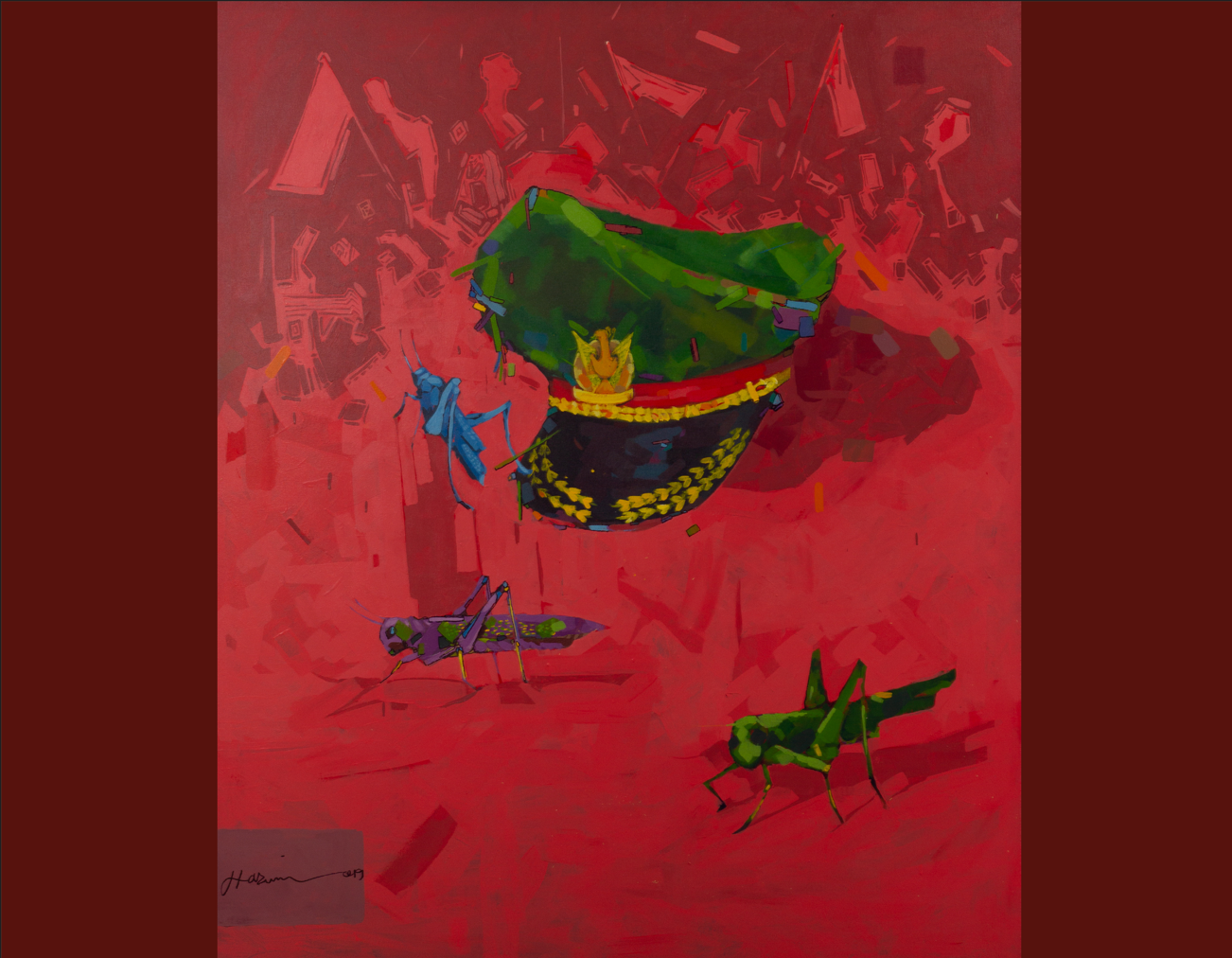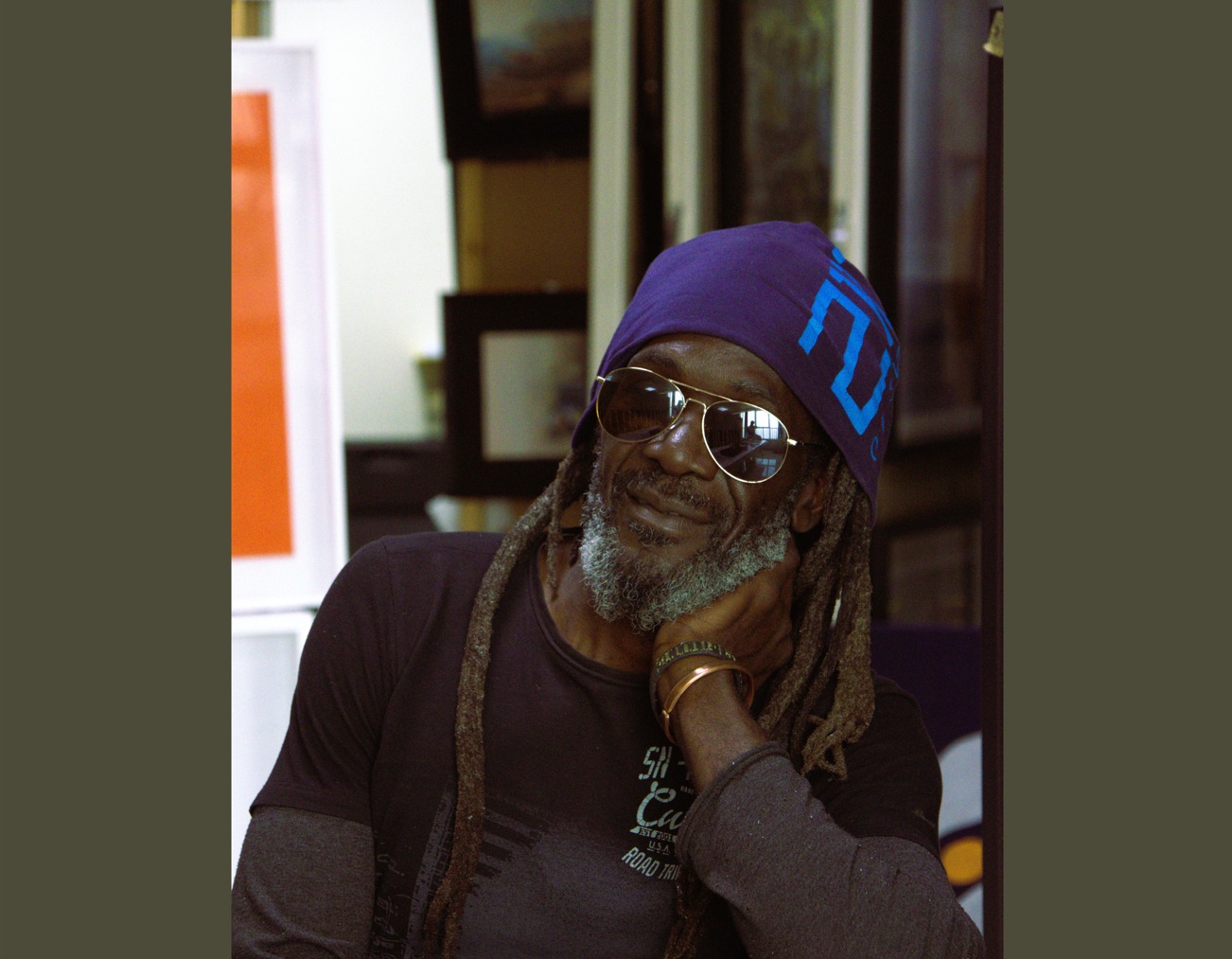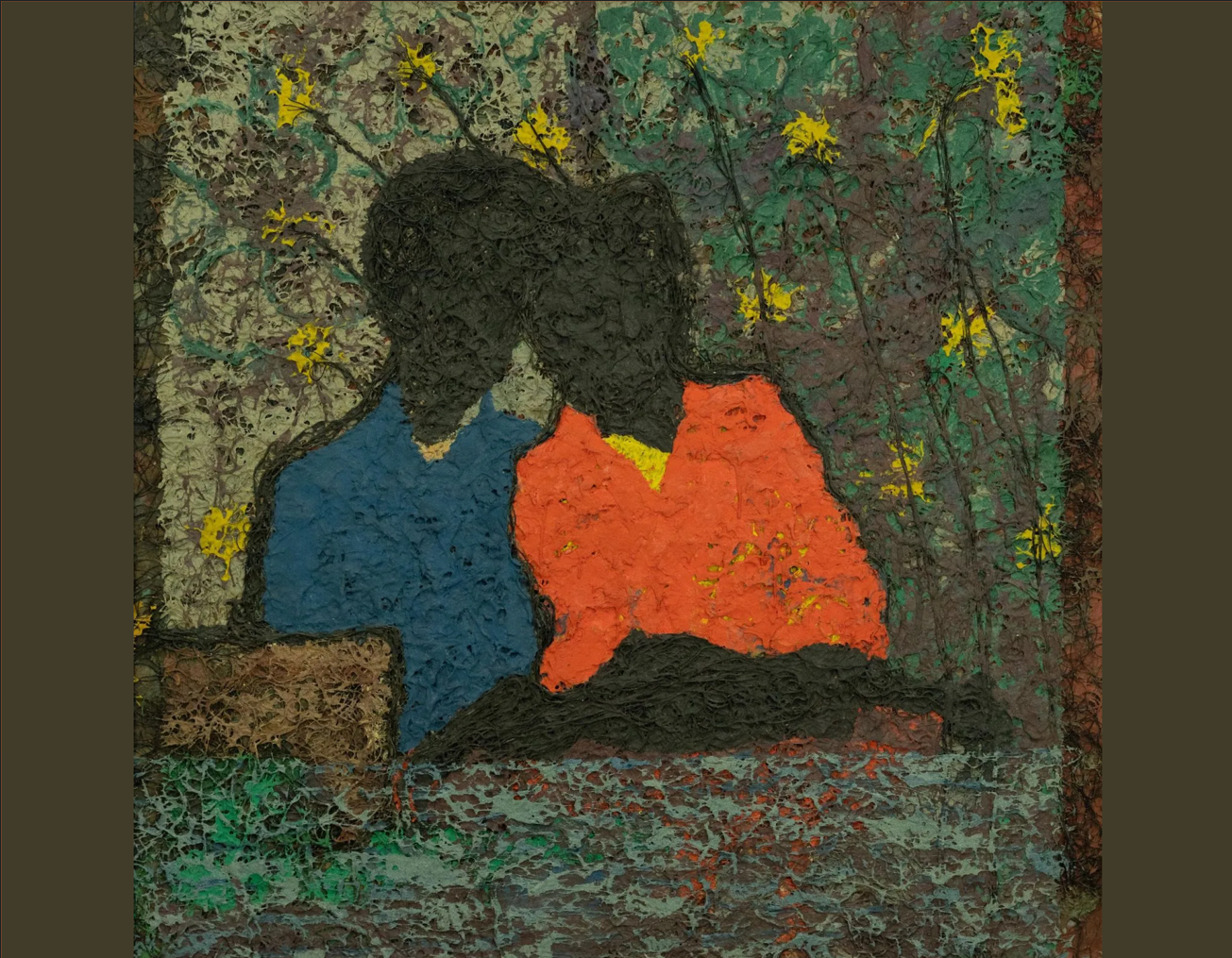An interview with David Kigozi

An interview with David Kigozi
David Kigozi (b.1975) is a Ugandan painter and sculptor whose work has been exhibited nationally, as well as in Kenya, Tanzania, Belgium, the UK, Germany, Canada, the USA and Australia. Much of Kigozi’s work focuses on power and contemporary politics. His semi-abstract compositions are created using acrylics, lacquer, and collage on canvas.
Dominic Muwangudzi speaks with the artist for ARAK.
Why do you make art?
I make art because it is my calling. I can’t live without it. It is also therapy to me which means without making art I feel uncomfortable and lost.
Is Africa or the African diaspora a part of your vision? If so, what or which Africa?
When I paint, I am usually telling the world what is happening or what I am seeing at a particular time. Therefore, I am a Ugandan artist who is communicating an African theme to the rest of the world, including the African diaspora. I believe my themes, although they are inspired by my immediate surroundings or whatever circumstances I may be going through, are very much relatable to the Africans outside the continent. This is because we probably go through similar circumstances as Africans regardless of the physical boundaries that separate us.
Is there anything original in art making? How do you reconcile influence and innovation?
In my opinion, if the art executed has not been executed before it means it is original. For influence and innovation in my art, I first have to be inspired by something and then I innovate it.
Are you self-taught, home-schooled, or shaped by institutional values?
I went to an art institution before embarking on a professional career in art. This was a teachers’ training college where I graduated to become an art teacher but I chose to actively practice art and not teach it. Nonetheless, as an artist, I believe I discovered myself a lot outside school through learning from different artists and experimenting with different ideas. Therefore, I have an experience of being shaped by an institution and also self-taught.

Does ‘Contemporary African Art’ mean anything to you?
Primarily, Contemporary African art is the art of now which also encompasses the style, technique and material the artist works with. But it can equally mean the type of theme the artist is interrogating in their work. I believe my work is contemporary because I respond to current themes which are a reflection of what is happening in society.
What role do you think art institutions play in shaping the discourse around ‘Contemporary African Art’?
They play an important role in facilitating young and mid-career artists to reach the pinnacle of their careers. However, there’s also the question of which institutions because some institutions are not helping many artists to grow but otherwise are imparting conservative knowledge to them which in the long run can have a negative impact on their careers.
Do you see a relationship between art and activism within the context of ‘Contemporary African Art’?
Yes. This is evident in some artists’ works which probe the political or social status quo. I think an artist whose work suitably responds to this theme of art and activism is Eria ‘Sane’ Nsubuga because he questions the politics and social terrain of his country and how it fits into the globalised world.
If I said that Africa is a global game-changer, what might this mean to you?
African art has long been relegated to the sidelines of the global art market because it was thought not to be important. However, now, there’s unprecedented attention around it because the global art world has realised we have something valuable to say. I believe African art is very compelling on the international stage because of our authentic subjects which are largely influenced by what we go through. We as Africans generally live through a lot of difficulty and this inspires what we communicate to the rest of the world. Equally, now that African art has gained prominence and spotlight in the international realms, we should use this opportunity to pass on that message we have always wanted to put forward to the outside world.
.webp)
How do we calibrate provincialism, nationalism, regionalism, continentalism, globalism? Is geopolitics vital in the making of art?
These concepts may be justifiable in certain contexts, especially when it comes to asserting one’s identity in a foreign land. I think it is understandable when someone takes pride in where they originate, or their nationality. This gives them a unique identity and distinguishes them from the crowd. However, this personal expression of who you are or where you’re coming from may not make a lot of sense since we‘re all living now in a global village.
Geopolitics in the making of art is important because as an artist I create what is closer to me, which is my country. Nonetheless, sometimes my themes, depending on their nature, may surpass the local audience I have primarily created for and go further to reach other audiences. More so, it is possible to find inspiration in other societies which are beyond my home country.
Is the medium the message? Is supplementary content important?
No, the medium is not the message although some artists may suggest otherwise. When I use acrylics to paint, I use them as a tool to pass on the message and not to communicate anything. Whether supplementary content is important, I do think it is because it adds meaning and value to the art. It is the artwork in its totality. The manner in which I select my colours and how I apply them on canvas is equally important just like the final painting.

What theme(s) or message(s) do you wish to communicate through your work? Why do you think you need an audience?
I usually deal with themes of humanity which give me an opportunity to appreciate life. When I paint children, I am celebrating their childhood but also reflecting on how their life will be like in the future. When I did the show Scrapers, I was probing the lifestyle of children in our communities today. There’ve been complaints that some of these children living on the streets are a public nuisance because they terrorise the community they live in. However, they’ve also been very useful to the same communities by making a living off picking plastics from the community. Their activities have helped to clean the environment, but also facilitate their schooling and household incomes.
An audience is important to me as an artist because I believe strongly that an artwork is never finished until it gets an audience. When I create a painting, it is only me and my painting in the studio. I need an audience to tell me if I have been successful in my creative endeavours or not. Similarly, when I paint I have a message I want to pass on to the public. The presence of an audience fulfils this agenda in my creative process.
What role do you think criticism/art writing plays in the contemporary art market? What does it mean for your own practice?
Art criticism/writing is important because the audience needs to be taken through the work the artist has created. On the other hand, criticism highlights certain aspects of the work the artist may have not paid attention to because of their subconscious process of working.
In essence, criticism/art writing prompts me to work better by reflecting on those particular elements the critique or writer may have identified in my work that may make it unsatisfactory for the viewer.
Cover artwork: David Kigozi, Big Brother. Acrylic on canvas, 106 x 71 cm. Image sourced from Photizo Art Gallery.
This interview has been edited for brevity and clarity.
Only the artwork UNTITLED is in the ARAK Collection.
.svg)


.svg)
.svg)


